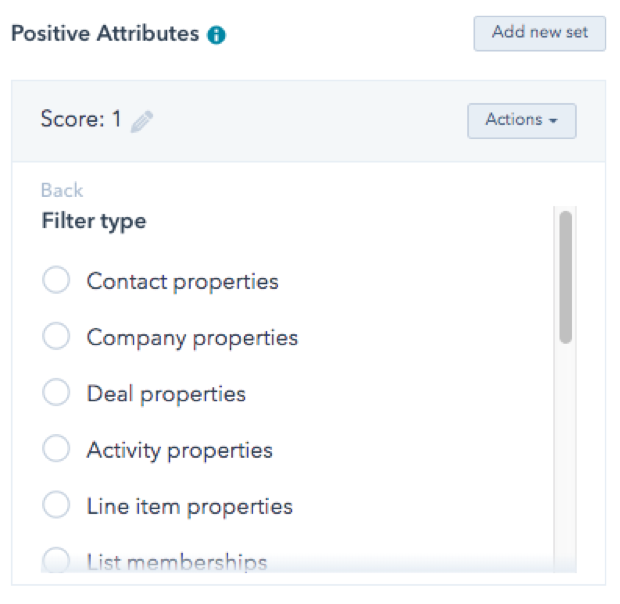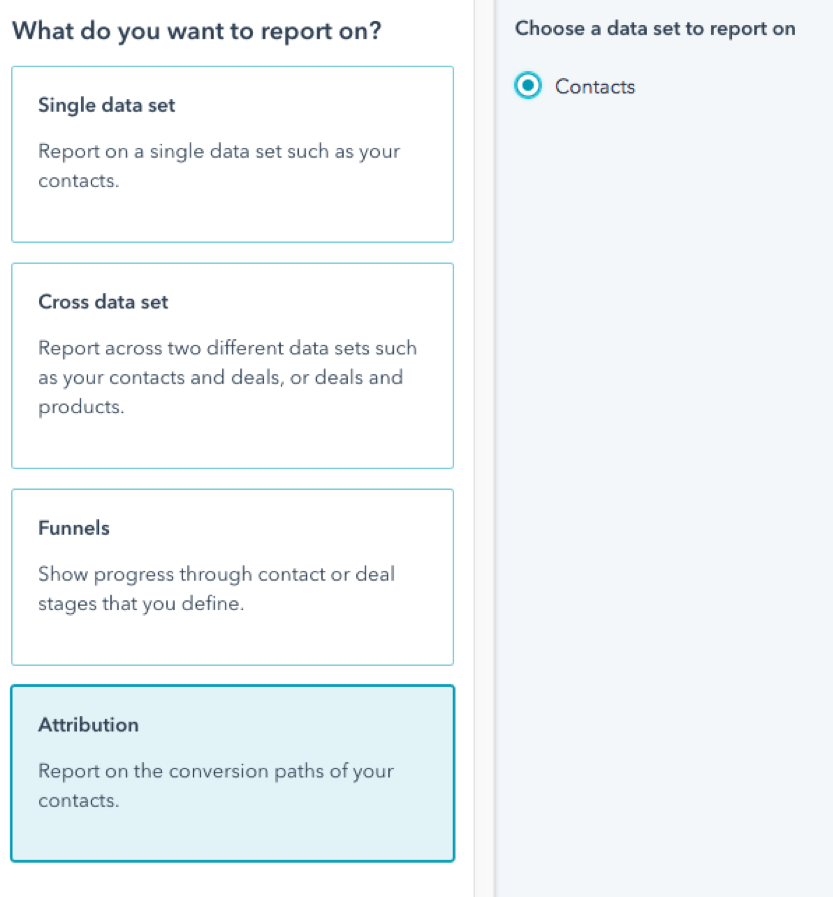
If you are reading this, there’s a good chance you were looking for somewhere to explain to you what lead scoring is and found this blog. That’s great news because, in this first piece of my HubSpot blog series, I will be breaking down what positive scoring attributes are and how you should be using them.
What Are Positive Scoring Attributes?
The first thing you should know when exploring lead scoring is how to make sense of positive scoring attributes. Positive lead scoring attributes are used to reward prospects for taking desired actions.
It is these activities that will help you identify engaged prospects. Think of this as the “set it and forget it” stage of lead scoring. Once you set the attributes, they will “run” in the background and collect the information you need.
By doing this, in a way, this is a self-identifier for prospects even if they’re not ready to buy right this moment.
It’s important that you have the right positive attributes set to the right point values so that the prospects are identified appropriately.
What Positive Scoring Attributes to Use
Before determining how you should set positive scoring attributes, you need to figure out what it is exactly you are trying to score.

Here’s where you add/edit positive attributes. You have the option to score on just about any recorded HubSpot field/activity.
NgageContent builds out lead scoring frameworks with positive attributes in the following categories: pageviews, email engagement, form submissions, and property values.
Every website, landing page, and blog post should have a score. The goal is to assign scores relative to the page’s conversion likelihood. For this, we use HubSpot attribution reports (more on that later) to identify high converting pages.
You should note that we tend to see team pages assist conversion. For example, feedback from customers on pages that helped move them along can also be taken into account. If a page assists conversion (or a blog post receives submissions on its contact form), score that page higher, such as two to three points as opposed to one point.
Another boost we recommend is assigning bonus points for total page views. If someone views 5-10 website pages (depending on the size of your site) or reads three blogs (depending on the size of your library), we’ll award five or so points on top of those earned from the initial page views (relative to the target score).
Understanding Email Engagement
Every email should have a score set for opens and clicks, including one-time send and automated emails. These should also be included in lead scoring as well.
The same principle as with the page views can apply here. If there’s an email you send out that converts really well, score opens and clicks higher, such as two to three points as opposed to one point.
We also incorporate bonus scoring here. If someone opens four to five emails or clicks on two to three emails, we’ll award five or so bonus points on top of those earned from the initial opens/clicks.
What To Do With Form Submissions
When it comes to form submissions, positive scoring attributes vary on what all is on the website. If there’s just a general contact form, that shouldn’t be scored highly unless it consistently produces quality leads. The reason being is that you don’t want spam submissions to potentially trigger an internal notification immediately.
However, make sure to include demo or get started forms as highly scored if they show the prospect’s intent to take the next step.
A form submission can also make the prospect graduate from scoring. If the submission makes them ready to talk with sales, then that’s a good point of contact!
When it comes to how newsletter or blog subscribe forms should be scored, it should be in proportion to the level of intent shown across the available forms.
Understanding Property Values
Depending on the contact properties in place, you can score relative to their values.
For example, if a certain industry or company size is more qualified in your eyes, you can award points to contacts with those values.
You can make properties for just about anything, so you have the freedom to score activities that happen outside of HubSpot as well, like trade show attendance or webinar signups.
Take This Scoring Scale Into Consideration
When it comes to the lead scoring scale, know that it is completely arbitrary. But, as long as you have a consistent scale, it doesn’t matter if you make an action worth one point or 100 points.

Example of HubSpot score property.
Knowing this, NgageContent typically recommends keeping the scale to single digits. This means a basic positive activity is worth one point, and a good positive activity (like viewing a high converting page) is worth two to three points. An awesome positive activity (like submitting a form) is worth 5-10 points.
The reason for keeping it to single digits can be easier to frame mentally. Having a large scale (goal of 1,000 points) can make someone at 200 points seem like a rockstar even though they haven’t done much. As long as it makes sense to the team and is easy to interpret, you can scale however you want.
Pulling and deciphering HubSpot Reports
Scoring email, form, and property activity may seem more straightforward, but it can be tough to weight the value of page views. Luckily, HubSpot has you covered here.

Example of creating a custom HubSpot report.
In pulling an attribution report, HubSpot looks at the tracked pages (landing pages, website pages, blog pages) that were associated with a contact that converted on your site.
If a page consistently tends to lead to a conversion, then it should be scored higher since it has a positive conversion influence.
It’s important to note that data for these reports will not automatically populate. Once you’ve set the time period and filters, you need to click “Run report” for the data to populate.
What You See in a Report
- Contacts assisted – shows the number of contacts in your HubSpot account that had a recorded conversion in the set time period
- Percent of contacts – shows the percent of contacts in the report that came from each particular channel/page
- Score/100 – shows the relative importance of each page depending on the number of contacts it assisted to conversion within the set time period
If you would still like to learn more about pulling and deciphering HubSpot reports, you can find more information here.
Talk With Us to Get Started
As you begin your own journey with setting up a CRM and qualifying leads, you may find you would like to speak with an expert to get you started.
Whether you’re just getting started with HubSpot or looking to get the most out of your current setup, we would be happy to help. Contact us today so we can get started!
